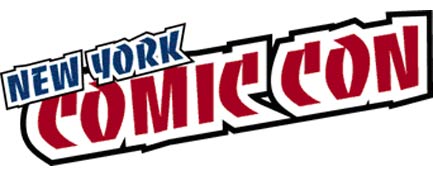I go to writing panels all the time because, well, I’m a writer, and I like listening to people talk about writing. However, they usually manage to find the writers MOST in line with the “socially awkward, barely-gets-out-into-direct-sunlight-let-alone-around-people” cliché, and who are the least adept at being engaging for these events. But as I mentioned in my Day 1 NYCC write-up, the Image Comics writers panel was one of the most entertaining writing panels I’ve ever been to, and that was entirely due to the hilarious, banter-iffic writers involved.
 Robert Kirkman (The Walking Dead), Nick Spencer (Morning Glories), Ron Marz (Firebreather vs. Dragon Prince), and Steven T. Seagle (The Crusades) were the Image writers on hand to break down their processes and help aspiring writers get better at what they do. The thing that really made this panel soar, in addition to the brash personalities of all four participants, was the feeling that they actually wanted to help aspiring writers get better. Too often, I’ll go to a writing panel and when someone asks a specific question about process, the answers they get back are vague nuggets like, “Well, you just have to keep writing.”
Robert Kirkman (The Walking Dead), Nick Spencer (Morning Glories), Ron Marz (Firebreather vs. Dragon Prince), and Steven T. Seagle (The Crusades) were the Image writers on hand to break down their processes and help aspiring writers get better at what they do. The thing that really made this panel soar, in addition to the brash personalities of all four participants, was the feeling that they actually wanted to help aspiring writers get better. Too often, I’ll go to a writing panel and when someone asks a specific question about process, the answers they get back are vague nuggets like, “Well, you just have to keep writing.”
Well, duh. I’m going to put it out there in the world right now that yes, we know that the only way to get better at writing is to keep writing. Like anything else, it takes practice. But what aspiring writers want from events like these are the specific details of what the professional writer does. They want to know nuts and bolts. Perhaps writers don’t get into that for fear that they will be boring, but I promise, this is exactly what the folks in that audience want to hear. They want something concrete to try or work toward, not vague platitudes or pats on the head.
At the start of the panel, the moderator asked the guys about how they got into writing and why they became writers. Ron Marz talked about how, at the end of the day he has the best, most fun job in the world. Robert Kirkman said, “I’m sure there’s some investment banker out there who really loves what he does…” To which Marz replied, “Yeah. But that guy’s an a#@hole.”
And we were off!
The moderator asked about their individual processes, and Ron Marz said that, when writing a comic, breaking down the pages is the bulk of the work before he even gets to writing the actual script. Every panel has a beat, every page has a beat, and every issue has a beat in relation to the larger story, and all that has to be figured out before you even start writing dialogue. After the script goes to the artist and he gets the art back, Marz will re-dialogue sometimes to make sure the dialogue fits. This, he says, keeps the comic organic, as opposed to trying to force dialogue on an artist’s work.
These guys all seem to be in love with their artists, and they all had lots to say about them. They all tailor their scripts to individual artists. Robert Kirkman, who’s been working with Charlie Adlard for going on eight years on The Walking Dead, says that his relationship with his artist is very loose, and his scripts read like emails. “And then there are a whole bunch of zombies attacking these people. So, you know…make that happen.” His favorite note to give Adlard? “And…make it look good!” It’s his favorite, because “[Adlard’s] stuff always looks good, but when I tell him to make it look good, it usually comes back even better!”
After conversation turned to upcoming projects, most of which seemed to be secret and couldn’t be talked about, the writers answered the question, “What is something you wish you could’ve known when starting out?” Robert Kirkman quipped, “I knew everything going in!” He followed that with a practical bit of advice. He wished he were taught to put his surprises on the left-hand page. He said that too often, new writers have a really cool plot twist or image in their script, and the reader will be like, “Whoa! I wonder what’s going to happen to…oh, here it is.” The most important thing in comics is to keep readers turning pages, and the way to do that is to have little cliffhangers on the right page, with the reveal on the left page that follows.
Yay for common sense advice!
Nick Spencer said that he wished he could tell his younger self that everything was going to be okay. All new writers feel like they’re fooling everyone, and that one day they’re going to be found out as the hacks they are. What he’s learned is that this feeling comes with every new project, but in the end, you wouldn’t have been hired if you didn’t have talent. Everything will be okay.
Steven T. Seagle gave what was, in my opinion, the best suggestion for burgeoning writers, which he received in a writing class that he admittedly “never went to”:
Every day–Monday through Friday–write for fifteen minutes with no interruptions. Do this at the same time every day. Do this for a month. If you can do it for a month without missing a day, do it for half an hour a day the following month. If you can do that for a month, keep doing it. If you can’t do this, you shouldn’t be a writer.
And really, who doesn’t have fifteen minutes a day?
Ron Marz said that he wished someone had told him “you should write for you. Write until you think it’s good. Don’t hand it in until you think it’s good.” And that was the important bit. Not only are you writing for yourself, but you shouldn’t hand in shoddy work in the rush to get something published. Too many writers spend too much time worrying about getting published and not enough time on becoming good writers.
And then, there was the audience Q&A, during which an audience that consisted mostly of people aspiring to do what these guys do (myself included!), asked very technical questions:
How do you break down pages?
Ron Marz suggested one should have a visual sense to work in comics, the same way a screenwriter should. On average, every comics page has 5 panels, but there’s no correct number.
What is your relationship with your artists?
Nick Spencer talked about playing to an artist’s strengths and giving them things to do that they enjoy and are good at. Different artists want different levels of involvement, and you have to take that into account to. For some artists he’s worked with, he’s established a shorthand. Other artists require more talking and explanation. So basically, treat your artists like individuals rather than have a cookie-cutter approach to working with them.
Ron Marz agreed with focusing on what they like to draw. Don’t write in crowd scenes if they hate drawing crowds (unless it’s absolutely necessary for the story, of course). And you should keep in mind that you have to keep your artist engaged, because once you’re done with your week of work on the script, the artist is going to be sitting with this for months. Giving them page after page of nothing but 5-panel pages or crowd scenes they hate is not going to inspire them to sit at their tables and draw. Basically, be considerate and realize that they have the more difficult job.
Steven T. Seagle doesn’t break down his scripts panel by panel. He tells his artists what he sees on the page, and lets them break it down. He is a big fan of letting the artist tell you what they need.
Robert Kirkman strongly recommends that you make sure and catch everything in the layout stage and make all your changes then. Because once the artist goes ahead and draws it, it’s really hard to take a choice back. So, spend a lot of time carefully going over the layout.
How do you write dialogue and keep it from being stilted?
Nick Spencer suggested talking it out. See what it sounds like when spoken aloud. Also, keep in mind that the more panels you have on the page, the less room you have for word balloons.
Ron Marz chimed in and said that the best way to learn how to write dialogue is to see how it works on the page. If you look at a page and you see that it’s crowded with word balloons, you’ve done something wrong.
Steven T. Seagle brought up an excellent point regarding burying yourself in comics. DON’T DO IT. All the writers you like bring things to their comics from elsewhere (and here, I thought about all the comic writers I love—Neil Gaiman, Paul Cornell, Brian K. Vaughan, Brian Michael Bendis—and it’s true! They all bring different sources of literature, or knowledge about politics, history, current events, etc, to what they create). They don’t only read comics. So if you’re reading comics exclusively and nothing else, your dialogue will sound stilted, because it will sound like it came from someone who only reads comic books.
Robert Kirkman maps his beats out in advance, so that his conversations don’t meander. Everything his characters say means something, because he hasn’t left room for stray words.
Steven T. Seagle closed the questioning by saying that “everything is beginning, middle, end. Every panel has a beginning, middle, end. Every page has a beginning, middle, and end. Every issue has a beginning, middle, end. Figure out the beginning first, then the end, then include a middle only if you have to.”
I haven’t been reading very many Image titles, but after going to this panel I’m determined to check out more of their stuff! I thanked them all afterwards for really bringing the knowledge and engaging with us.
Who knew that you could actually learn things at a comic con?!
Teresa Jusino was born the same day Skylab fell. Coincidence? She doesn’t think so. She is a freelance writer in New York City who is a regular contributor to websites like ChinaShop Magazine, Pink Raygun, and Newsarama. In addition to her geeky online scribblings, she also writes prose fiction and screenplays. Teresa is the author of a chapbook of short stories called On the Ground Floor, and she is working on a webseries called The Pack, coming in 2011. She is also the last member of WilPower: The Official Wil Wheaton Fan Club. Get Twitterpated with Teresa, or visit her at The Teresa Jusino Experience.










